When it comes to making music class fun, but also educating our students on the importance of music, selecting the right songs for elementary music class is essential for creating a dynamic and engaging classroom experience. Choosing quality songs for elementary music class not only helps create buy-in from your students, but they can also serve as powerful tools for teaching fundamental music concepts, such as rhythm, melody, form, etc.
Now there are several factors that you need to consider when choosing songs for elementary music class, and we are going to break down each consideration throughout this post. Hopefully, by the end, you will feel better equipped to choose the best songs for your students, ensuring that your lessons are educational, enjoyable, and inclusive- the perfect trifecta!
Want to watch or listen instead of read? Watch this video to hear the reasons explained in video format!
1. Can It Teach A Musical Concept?
One of the most important aspects of selecting songs for elementary music class is the song’s educational value- can it teach a musical concept? If it cannot, then why are we including it in our lessons? We already have such a short time with our students that we cannot afford to waste our time with songs that do not help us reach our teaching goals. Each song that we choose to use in our classroom can be a vehicle for teaching fundamental music concepts, whether it’s melody, rhythm, or dynamics.
When researching songs, consider the specific music concepts you want to highlight. For example, songs with distinct melodic lines can help students understand pitch and tune, while songs with clear rhythmic patterns are perfect for teaching beat and tempo. You want your students to enjoy their time in class while also furthering their knowledge of musical concepts.
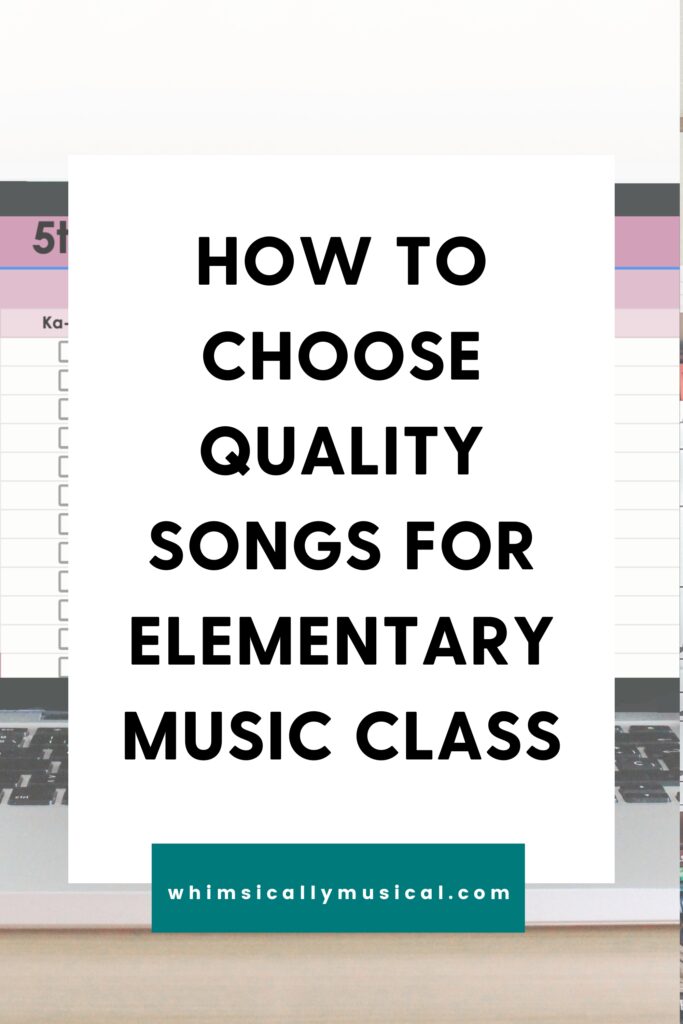
2. Needs to Be Vocal Range Appropriate
The vocal ranges of the songs you choose to use in class are crucial. Your students are young, which means their voices are still developing. As such, we should be choosing songs that fit within their vocal range, which might be different than yours. Songs that are too high or too low can be challenging for students and might turn them off from singing, which is already such a struggle once they get to upper elementary!
If you end up finding a song that you love but it’s not quite right for your students’ vocal range, you could simply transpose it to another key, or change the melody to fit the needs of your students.
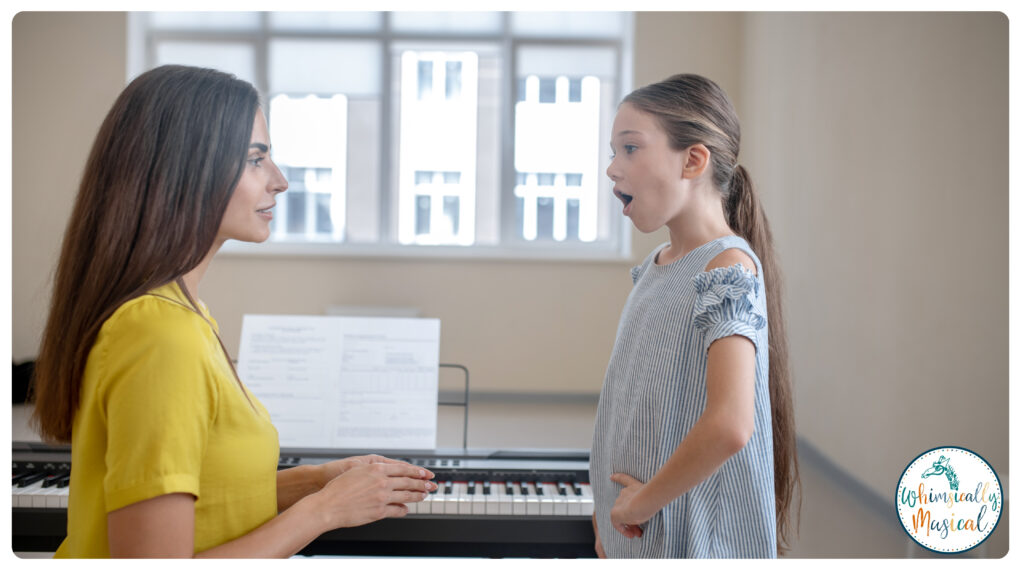
3. Is It a High-Quality Song?
When someone says a song is high quality, what do they mean? Usually, it means the song has a meaningful message or comes from a reputable source. I’m sure you can think of songs that you would never use inside your music class, as they are not high quality, and they do not provide any value to your students.
When looking for high quality, look for songs that offer educational value and convey positive messages. Also, consider the origin of the song, and if it has a historical significance, as you can then provide your students some cultural context. High-quality songs help create a well-rounded music curriculum and enhance your students’ appreciation for music.
4. If You Don’t Like the Song, Don’t Use It
Your enthusiasm (or lack thereof) for the songs you are using in your elementary music room will significantly impact your students’ experience. If you are not enjoying a song, it’s highly likely that your students won’t either. When you are selecting songs for elementary music class, choose ones that you genuinely enjoy and find yourself singing often, or enjoy singing, as those are the songs your students will love as well. Don’t do a disservice to yourself by choosing songs that you have no desire to teach simply because it “checks off a box.” If you’re not excited about a song, it’s worth finding alternatives that you can enjoy and that will bring joy to your students as well!
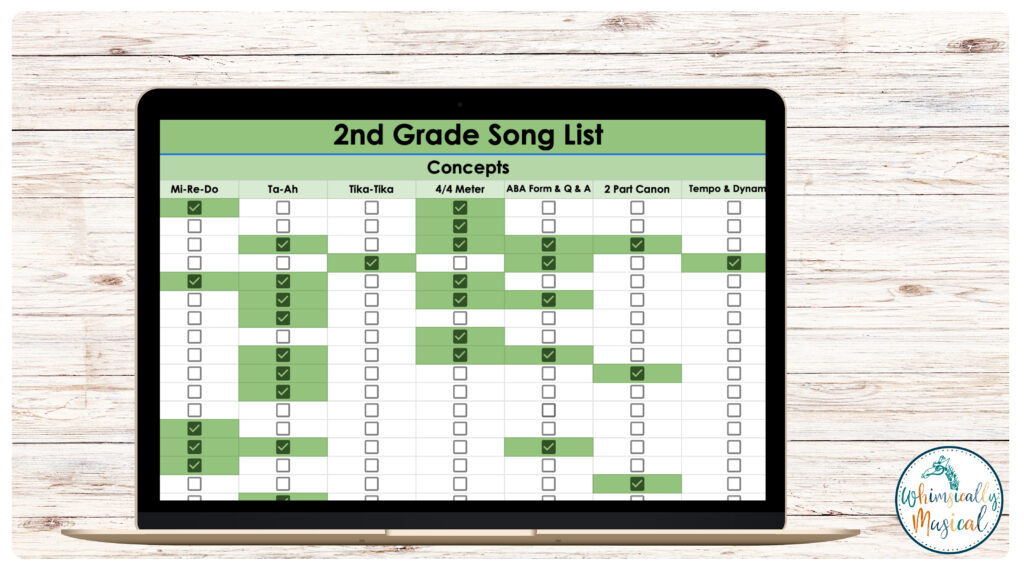
5. Is It Diverse or Culturally Appropriate?
Incorporating diverse songs into your music curriculum is important if you wish to provide your students with a well-rounded education. Your music room might also be one of the only places they hear diverse music, which makes it even more important. Songs for elementary music class should include a variety of cultural perspectives, helping your students appreciate and respect different musical traditions. A great way to do that is through choosing folk dances from different countries, or traditional folk songs. However, when choosing diverse music, make sure that the songs you choose are both culturally appropriate and represent their respective traditions accurately and respectfully.
6. Is It Adaptable/Can Be Used in Other Creative Ways?
Versatility is key when choosing songs for elementary music class. We don’t want to do the same types of activities every single class with our students, or they will be bored, as will we. We need to be looking for songs that can be adapted for various classroom activities. Is there a song that works well with instruments, and body percussion, or could be used as a movement activity? Can it serve more than one purpose within the music room? Can you use it with more than one grade level? By choosing songs that can be used for various activities, you can incorporate different teaching methods and keep your lessons exciting and engaging.
Selecting quality songs for elementary music class involves careful consideration of several factors, like educational value, vocal range, song quality, personal enjoyment, cultural diversity, and adaptability. We want our student’s musical experience to be rich and enjoyable, and that starts with the songs we choose to use in our classroom.
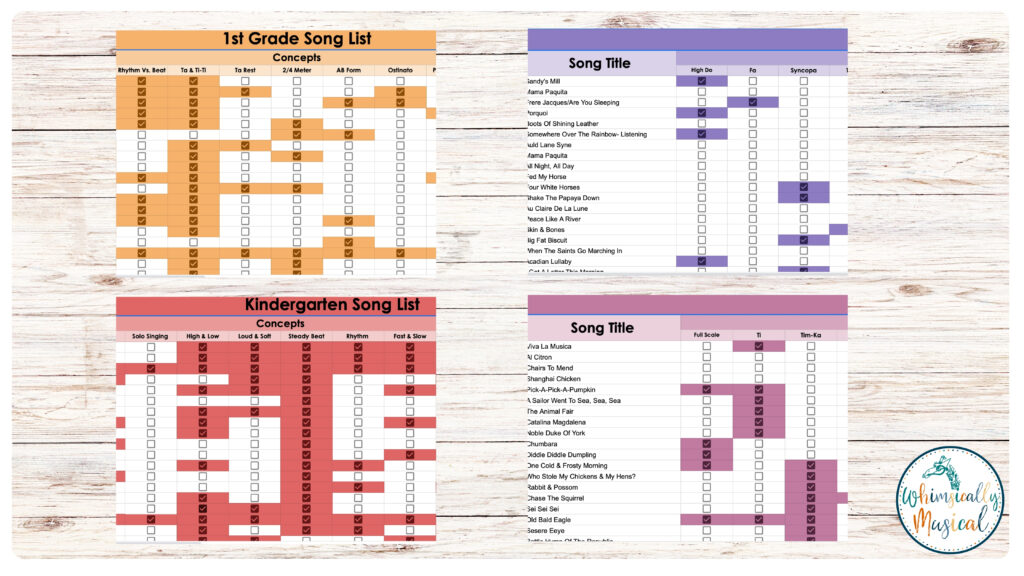
And if you’d rather someone else do all of the hard work in finding high-quality songs and activities you can use with your elementary music students for your lesson plans this year, then look no further- I’ve created a resource that does just that!
These elementary music song & concepts lists are the perfect tool you can use to make sure you are using both age-appropriate and quality songs for elementary music class!
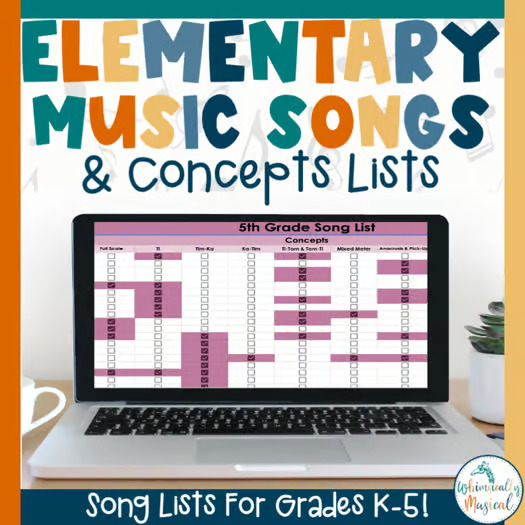
Click here to check out the song lists
Looking for other ways to stay organized/well-prepared for your music classes?
Check out this post on How To Organize Your Google Drive For Teachers

Great article! I really appreciate the clear and detailed insights you’ve provided on this topic. It’s always refreshing to read content that breaks things down so well, making it easy for readers to grasp even complex ideas. I also found the practical tips you’ve shared to be very helpful. Looking forward to more informative posts like this! Keep up the good work!